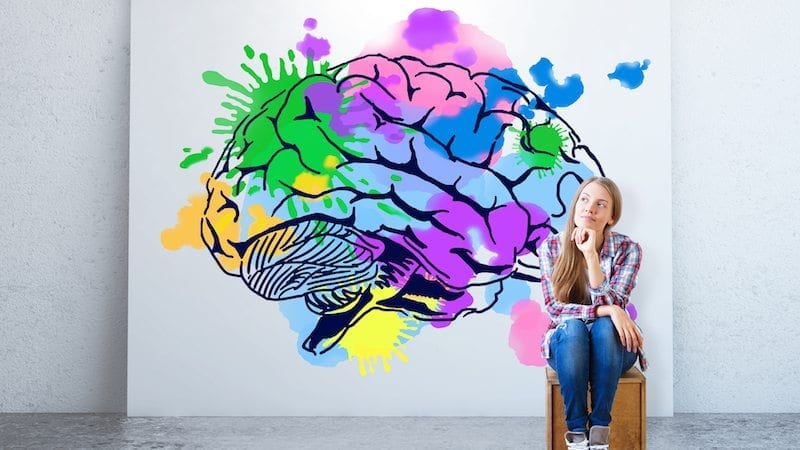Art changed the way Steve Jobs thought about science and looked at the world. His experience learning calligraphy opened up his ability to think for himself. “Reed College at that time, offered perhaps the best calligraphy instruction in the country,” Jobs said, when he gave the commencement speech at Stanford in 2005. “Throughout the campus every poster, every label on every drawer, was beautifully hand calligraphed […] I learned about serif and sans serif typefaces, about varying the amount of space between different letter combinations, about what makes great typography great. It was beautiful, historical, artistically subtle in a way that science can’t capture.” Just as the art of calligraphy changed Jobs’ perspective, a school-wide arts integration program has the ability to improve student achievement and motivate even hard-to-reach students.
Music was the art that opened up my ability to see learning through more than one lens. When I taught math, I helped students understand fractions through music. I showed them how the time signatures that indicate the number of beats in a measure are fractions. At first I integrated arts into my mathematics classes because I was being compliant. But, after realizing its effects, I moved from a compliance-oriented mindset to doing what was best for students. The more I integrated art, the more I noticed my students’ increased engagement, homework completion, and achievement. After integrating math with music, at least 90 percent of my students showed a learning gain on the statewide assessment.
Now, as director of fine arts for Georgia’s Clayton County Public Schools (CCPS), I’m working with other district leaders to integrate the arts into our teaching, district-wide. We have introduced arts integration to four of our schools. Two of those fours schools received a state grant for math and arts integration. As a result of our approach, we have seen math test scores rise for students in grades 3–5.
Here are nine lessons we learned that can help other school systems infuse art across the curriculum:
1. Set the vision for school-wide arts integration.
Success begins with articulating a vision for what you’re trying to accomplish—and why. In our case, we wanted to provide education both in the arts and through the arts, so that students would be more engaged and develop unique forms of expression and communication. Through ArtsNow, the district’s three fine arts magnets developed a vision statement that set the tone for non-magnet schools that were interested in arts integration: As a CCPS K–12 magnet program, we provide high-quality, rigorous education in the arts and through the arts. We are unique to developing critical thinkers and problem solvers through creative and innovative experiences.
2. Target leaders to help bring about the change needed for school-wide arts integration.
To bring about change, you must get leaders on board first. We presented the concept to our school leadership initially, and we enlisted their help to get buy-in from the remaining staff. We targeted our leaders by introducing them to a two-day training from Crayola’s creatED that trained school leaders on building a vision for arts integration and how to lead the change.
School leaders left the training armed with tools, methods, and research to share with the instructional staff. Having a leadership team in the training was a key factor to our schools’ success with implementation.
3. Focus on the research and the results of other school-wide arts integration programs.
As educators, we tend to be skeptical of new ideas. We don’t believe something works until we see that it’s successful in a school or a district that is similar to ours. Having research to support what we were proposing was critical in convincing stakeholders to embrace our initiative. Here’s one study to get you started: Turnaround Arts Initiative schools demonstrated 22.5 percent improvement in math proficiency and 12.62 percent improvement in reading proficiency.
4. Start small by integrating art into one part of your school.
Begin with the classrooms where excitement is the greatest and grow your initiative from there. There are multiple ways to start small. Principals could develop an arts leadership team and begin to grow teacher leaders that represent each content area and/or each grade level. The fine arts teachers should be members of the leadership team. Once you have created and trained the arts integration team, start to use them as ambassadors for the effort. From there begin to train a key group of teachers each year while using the leadership team as mentors.
5. Build capacity of staff to deliver an integrated arts program.
We partnered with a few organizations to deliver training. One was ArtsNow, which has trained teachers in some of our elementary schools, and the other was Crayola, which has supplied creatED training and resources for instructional coaches and leadership teams. The key ingredient to our partnerships with both groups is customization. Each organization must be willing and able to customize their training sessions and support to meet the needs of each school. They also needed to ensure that the district’s priorities were embedded in all training sessions. Each organization was also able to submit to us their plans on how the trainings and support would benefit all students, including students with disabilities, English learners, etc.
6. Encourage risk-taking around the arts integration learning process.
Integrating the arts into instruction requires a shift in mindset, and leaders must let their teachers know it’s okay to take risks in their classrooms. This is important for overcoming the anxiety that teachers often feel about trying something new in their classrooms. Invite teachers to discuss successes and failures in a nonthreatening environment. When teachers are risk-takers, they model safe risk-taking actions and attitudes.
7. Inform school-wide arts integration skeptics.
Arts integration is not a curriculum, nor is it a set of strategies. Instead, these are research-based shifts which embed both the art and the science of teaching and learning. Arts integration allows students to work through a creative process that doesn’t necessarily have a standardized assessment aligned to it. Skeptics will always look for the direct alignment. However, if you inform the skeptics in how to move beyond the norm and begin to integrate the arts, they will see increased student engagement. Student engagement will move students closer to increased student achievement. You’ll always encounter skeptics who don’t see the value of what you are proposing. To those individuals, I would say, “Try it in your classroom for a single lesson and see what happens. Your students are going to be engaged, and you’ll realize the benefits for yourself.”
8. Include support for teachers in integrating arts into their lessons.
Make sure there are resources available for teachers. This gives teachers the confidence they need to go back to their classrooms and apply what they have learned. The Kennedy Center offers sample lessons to assist teachers with getting started with arts integration. The best support to Clayton County is the on-site fine arts teachers and the master core teachers having the opportunity to plan and create lessons together.
9. Look out for the future of your school-wide arts integration program.
We are always looking for extra funding sources to sustain our efforts. If you are searching for best practices, start with local organizations and government agencies.
Follow School Leaders Now on Facebook and Twitter for all the latest updates.

